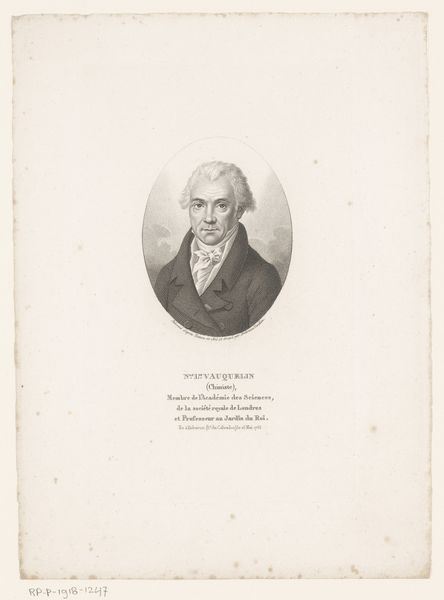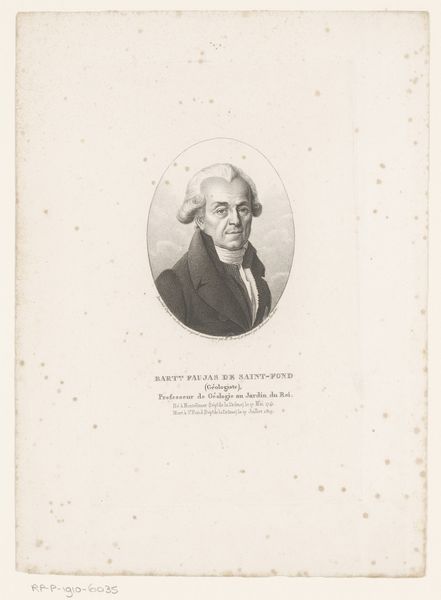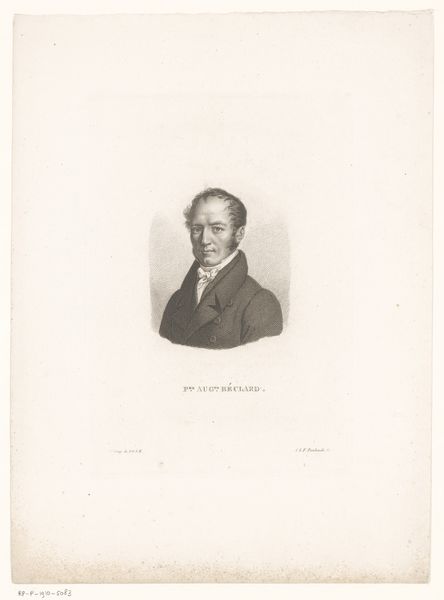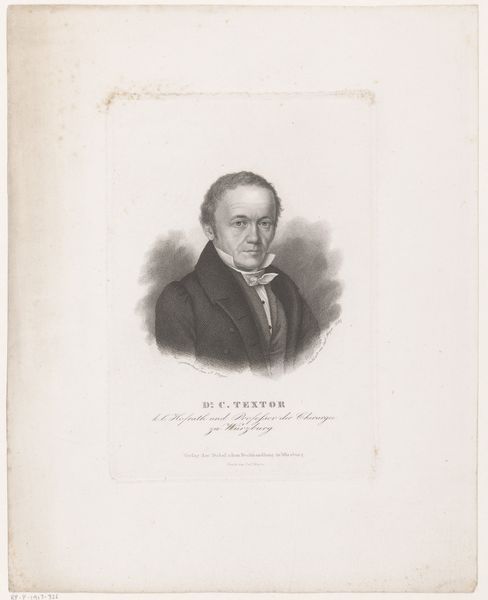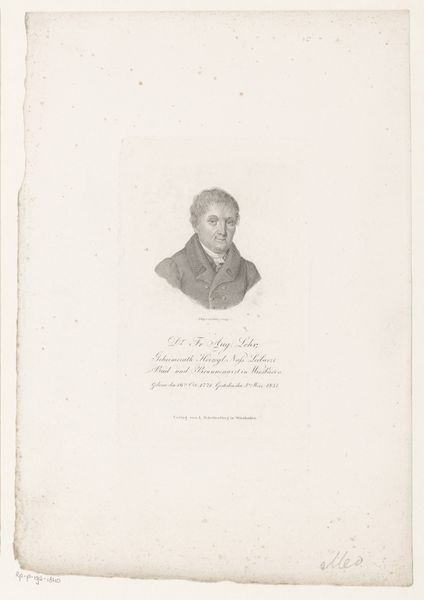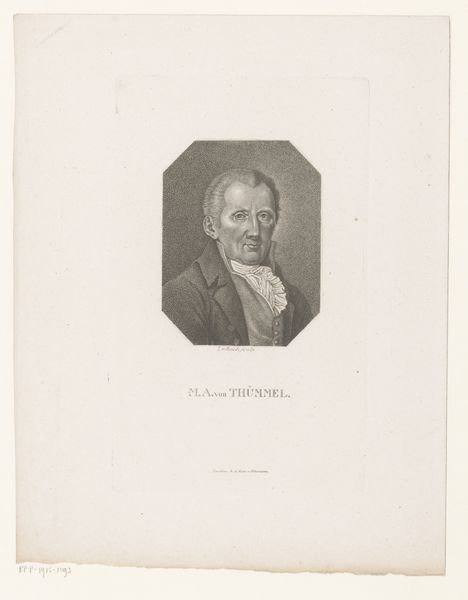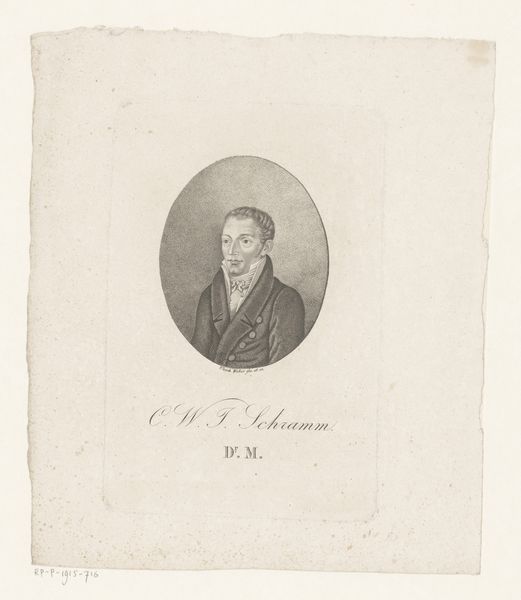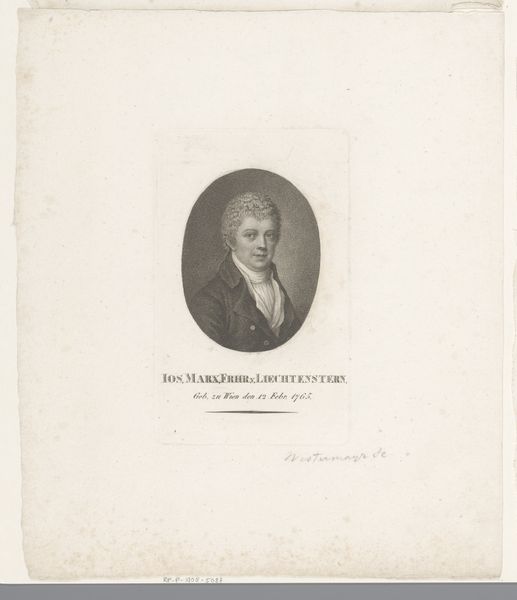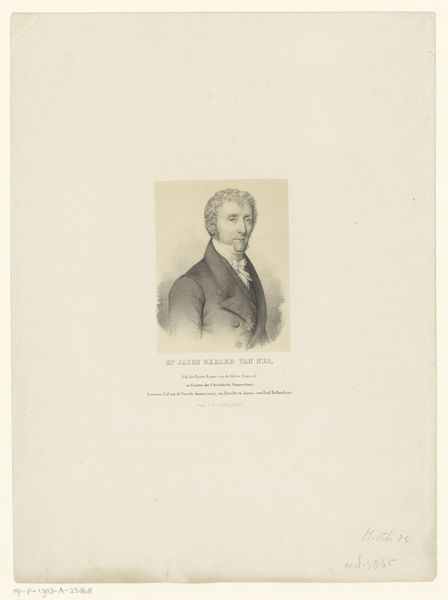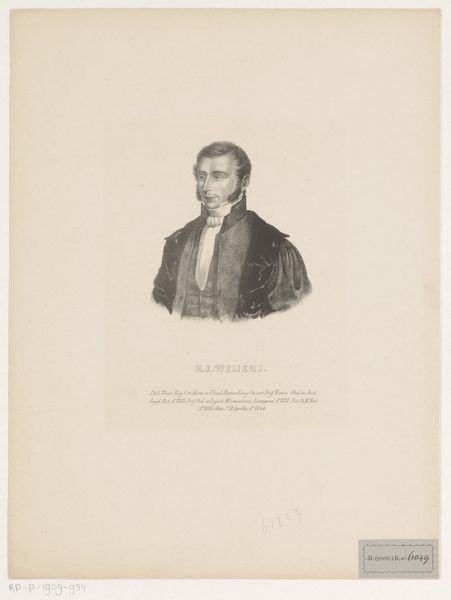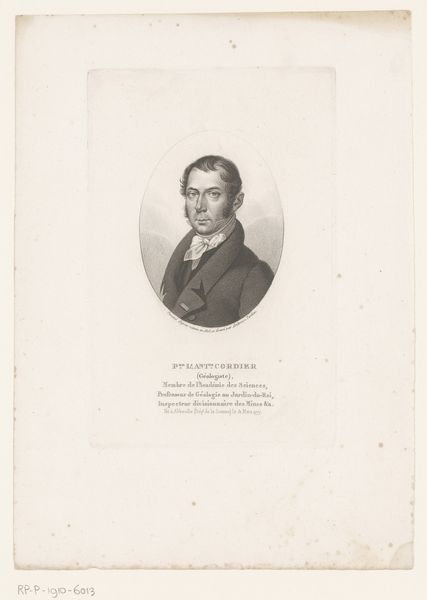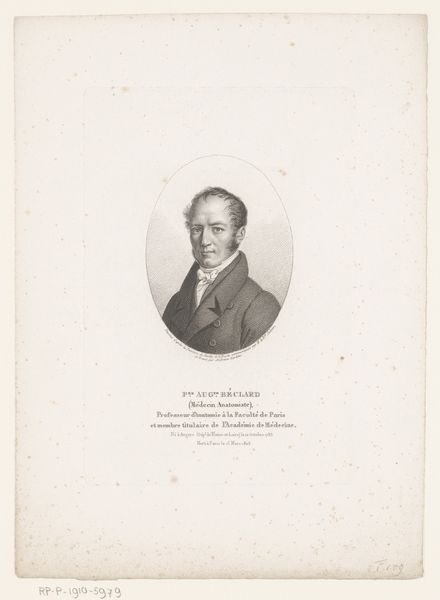
engraving
#
portrait
#
neoclacissism
#
aged paper
#
light pencil work
#
academic-art
#
engraving
Dimensions: height 226 mm, width 142 mm
Copyright: Rijks Museum: Open Domain
Curator: This is a portrait of Louis François Élisabeth Ramond de Carbonnières, engraved by Ambroise Tardieu sometime between 1820 and 1828. The subject, Ramond de Carbonnières, was a prominent geologist. Editor: My first impression is the sheer weight of those lines; look at how deeply the man's gaze is set, the determined shape of his mouth, that dark coat, everything suggests gravitas. The textures feel so immediate in their age! Curator: I think what's interesting here is how Tardieu's work participates in this Neoclassical revival of the period. He presents Ramond as an intellectual, echoing the emphasis on reason and classical ideals, that defined Neoclassicism while subtly referencing Ramond's social standing, class and historical significance through deliberate artistic choices. Editor: Absolutely, and let's think about the materiality itself. This engraving, reproduced many times over, spread the image and reputation of Ramond far and wide. Consider the labor involved in the plate-making and printing! These reproductive processes allowed for dissemination of not just the image but also the ideals associated with men like him. It reinforces class dynamics but is still mechanically reproducible for consumption! Curator: I'm also struck by how this image can be analyzed as a symbol of Enlightenment ideals intersecting with early scientific development. There is a story embedded, for instance, about elite networks through inscription about the academie des sciences membership, but this also points towards his relationship with nature as something worth studying. Ramond’s background, the intellectual trends, his identity are completely entangled. Editor: Precisely. That’s a clear representation of how the making and use of an image tie directly into these scientific, cultural, and power structures that would in return re-impact the scientific processes in his era, informing its theories. It also makes me think of our contemporary modes of dissemination and how rapidly these circulate with no material form. Curator: That's it! A moment captured through craft that serves as both individual remembrance and a much larger societal record. Editor: Yes, exactly. It’s the social life of materials and how objects mediate human interactions in the context of art historical dissemination that holds significance!
Comments
No comments
Be the first to comment and join the conversation on the ultimate creative platform.
